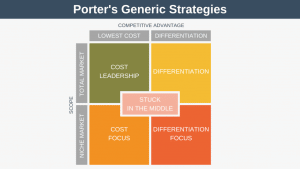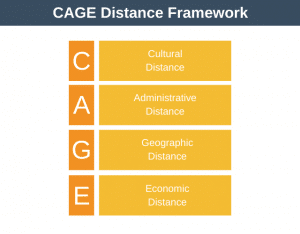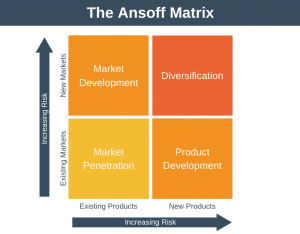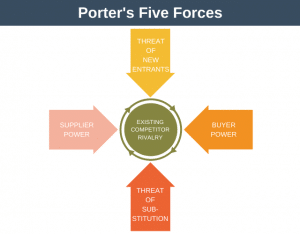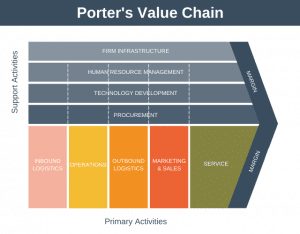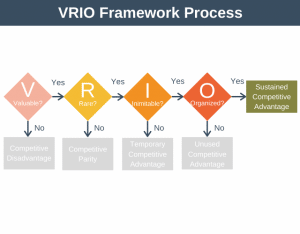Horizontal and vertical integration refers to an organization’s strategic approach when expanding externally, through the acquisition of, or a merger with, another company.
At the end of this article, you’ll understand the difference between horizontal and vertical integration, along with each approach’s benefits and drawbacks.
To understand horizontal and vertical integration, you must first understand what a supply chain is.
The Supply Chain
A supply chain is simply the high-level chain of activities that must take place to create a product or service.
Let’s take a look at an example of a simple supply chain by imagining you own a business selling paper diaries that you sell direct to consumers via your website. Your supply chain might look something like this.

First, one company will create the raw material (the paper) for your diaries. Using that paper, a second company will manufacture your diaries and send them to you. Finally, you’ll sell your diaries direct to customers from your website.
Understanding Horizontal and Vertical Integration
Now that you understand the basics of supply chains, you’re in a position to understand both horizontal and vertical integration.
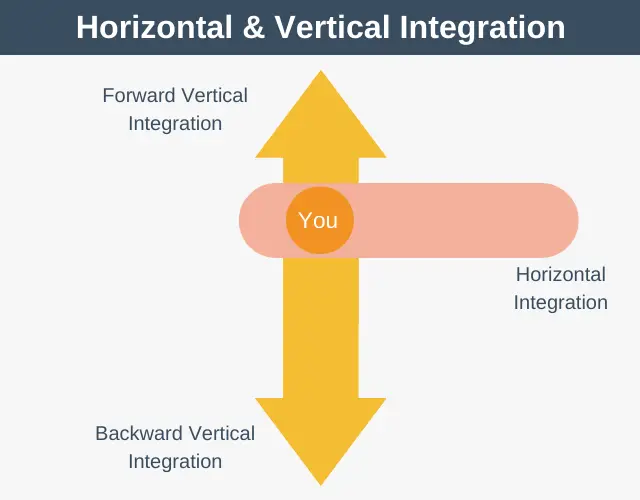
As you can see, when you integrate vertically, you buy or merge with a company in our existing supply chain. Conversely, when you integrate horizontally, you acquire a business at the same stage of the supply chain (but in a different supply chain).
Thinking back to our diary example, a horizontal integration you could make would be to acquire another diary seller just like your company. In contrast, a vertical integration might be to acquire your diary manufacturer – a company is vertically integrated when it owns more than one level of its supply chain.
There are two types of vertical integration: forward and backward. Forward vertical integration occurs when you acquire a company higher up your supply chain, and backward vertical integration occurs when you acquire a company lower down your supply chain.
So why would you choose to perform either horizontal or vertical integration? That will become clear shortly after looking at some real examples of each type of integration.
For now, let’s recap the different types of integration.
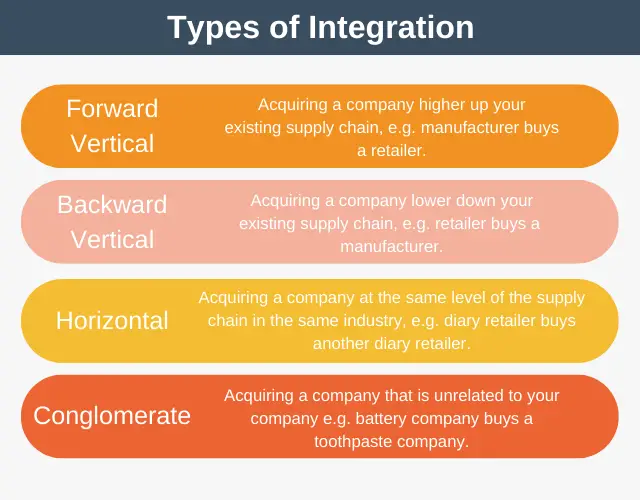
Note that there is a special case that we haven’t yet covered – that of a conglomerate. This happens when there is no apparent connection between your company and the company you are purchasing.
A conglomerate is a collection of businesses grouped together under one umbrella.
Note that sometimes an organization will vertically integrate in both directions, forward and backward. This is often referred to as Blended Vertical Integration.
Example: Horizontal Integration
For horizontal integration, let’s look at the car manufacturer Volkswagen (VW). VW performed a horizontal integration when it acquired another car manufacturer Skoda.

There are many reasons why VW bought Skoda, including:
- Access to new markets in eastern Europe.
- Ability to sell to a new consumer segment looking for low-cost yet well-made cars.
- Cost savings where equivalent-sized VW and Skoda models eventually share the same underlying chassis despite looking like entirely different cars. Essentially, the chassis only needs to be developed once and can be used across brands.
Example: Vertical Integration
For an example of vertical integration, let’s look at the luxury fashion brand Louis Vuitton. Louis Vuitton is a luxury leather goods manufacturer, and a critical vertical integration that it has made is that its products are only available for sale through its own retail stores. You cannot buy Louis Vuitton anywhere else.

So, why have they set themselves up this way? Why can’t you buy Louis Vuitton bags from Amazon? There are many reasons for this, including:
- Selling only through its stores boosts the exclusivity of its products and allows it to charge premium prices.
- It allows the brand to provide a luxury shopping experience to its customers, which again helps it to charge premium prices.
- Finally, this vertical integration provides a considerable barrier to entry against competitors. If a new entrant wants to enter the market and compete with Louis Vuitton, having to set up its own stores is a huge and costly barrier to entry. Of course, it could sell via Amazon, but this wouldn’t allow the brand to charge anything like Louis Vuitton’s premium prices.
Advantages and Disadvantages of Horizontal Integration
Advantages
There are several advantages associated with horizontal integration:
- It can lower your operating costs by reducing the duplication of resources and increasing economies of scale.
- It can increase your differentiation by allowing you to offer more combinations of products.
- It enables you to sell to new market segments while maintaining your known and understood business model.
- Your increased size can give you greater bargaining power with your suppliers.
Disadvantages
There are several disadvantages associated with horizontal integration:
- All mergers and acquisitions carry risks, and your union may not work out as hoped.
- Becoming too large may result in anti-trust issues.
- Implementing a horizontal integration strategy is not easy, and it will take time to realize any benefits.
Advantages and Disadvantages of Vertical Integration
Advantages
There are several advantages associated with vertical integration:
- You can increase margins and economies of scale by eliminating intermediaries and consolidating staff.
- It allows you more control over the quality of your product and customer experience, which, as we’ve seen, is very important for luxury brands.
- Allows you to differentiate from your competitors. For example, Apple Stores position Apple products in a more premium way than Microsoft products are positioned.
- Acquiring suppliers allows you to protect any proprietary processes you use at that level in your supply chain.
- It increases the barriers to entry for new entrants wishing to compete directly with you.
Disadvantages
There are several disadvantages associated with vertical integration:
- It can be expensive to purchase more of your existing supply chain.
- It can increase your ongoing costs. For example, purchasing your manufacturer and having them focus on producing just for you rather than many customers can lead to higher costs.
- Success isn’t guaranteed. As with all mergers and acquisitions, many things can go wrong, and things may not work out as you hoped.
Summary
Business owners are always looking for ways to grow their companies, and horizontal and vertical integration provides two approaches to do just that.
Horizontal integration occurs when you acquire another company in the same line of business. Vertical integration occurs when you acquire another company in your supply chain.
Which approach is right for you will depend on your business’s unique circumstances and future goals and ambitions.

